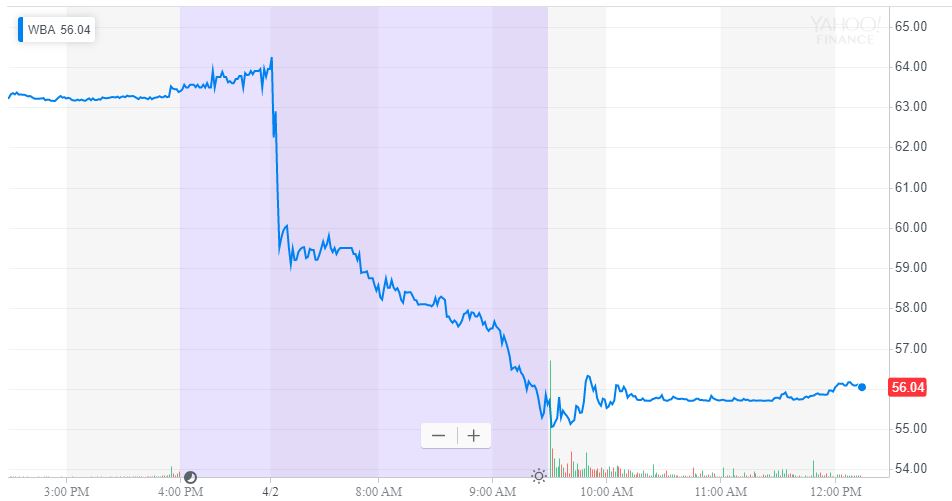[ad_1]
Following a weak opening, the Dow Jones slipped by 0.33 percent to 26,172 on Tuesday, maintaining the 26,000-point level but disappointing investors after a strong week of gains.
Despite the optimism of investors surrounding the Federal Reserve’s reluctance towards increasing its benchmark interest rate, strategists are not convinced that the Dow is ready for a full-fledged rally.
Markets Preparing the Worst, Will it Zap the Dow Rally?
The Dow is said to have slipped since the opening due to the 11 percent plunge in the share price of Walgreens Boots Alliance as it lowered 2019 estimates.
“A number of the trends we had been expecting and preparing for impacted us significantly more quickly than we had anticipated,” CEO Stefano Pessina said in an earnings call.
The drop of Walgreens combined with the struggle of several retail and energy firms led both the Dow and the S&P 500 to decline.
According to ZEGA Financial CEO Jay Pestrichelli, the global market is cautiously optimistic but is preparing for the worst, emphasizing various geopolitical risks and the slowdown of the global economy.
“The world is cautiously optimistic — hoping for the best, but preparing for the worst,” Pestrichelli told Bloomberg.
While strategists generally foresee the global economic slowdown having a minimal impact on the U.S. stock market, the lack of stimuli could prevent the Dow from surging higher above 26,000 in the near-term.
Not Enough Stimulus to Extend Dow Recovery
All the factors for a equities market rally have been laid out already: wages are growing, productivity is rising, the U.S.-China trade deal is seeing progress, and the Federal Reserve is not planning to raise rates until the year’s end, potentially even by 2020.
The problem in the eyes of strategists is not a variable that could lead the Dow to the downside in the near-term but rather the lack of stimuli that will create a difficult environment for the Dow to recover beyond key resistance levels.
Wells Fargo Investment Institute head of global asset allocation strategy Tracie McMillion told the WSJ:
“We’re not anticipating that we’re going to see a big enough earnings surprise to boost stock prices much higher than they are now.”
The general sentiment of strategists around the U.S. equities market seems to be an expectation of an extended period of stability in the medium-term, supported by the Fed’s patience with its rate.
“My hope is that the economy can grow out of this and give central banks some extended period of time to refocus,” Dan Miller, equities director at GW&K Investment Management, explained.
Brexit Remains a Problem for Global Markets
The global economy has been largely stagnating due to the slowdown of the eurozone economy and the inability of leading economies such as Germany and Italy to rebound in the past several quarters.
An issue with the eurozone economy is that some of the major economies are dependent on the UK, and the lack of decisiveness in securing any sort of a Brexit deal has continued to fuel the decline of the eurozone.
Earlier in March, the European Central Bank revived some of the components of its economic stimulus program, indicating the acknowledgment of risks by the ECB that could trigger a recession in the foreseeable future.
“We’re looking at the potential for a synchronized slowdown of the global economy,” Carl B. Weinberg, chief international economist at High Frequency Economics, told the New York Times.
[ad_2]
Source link





